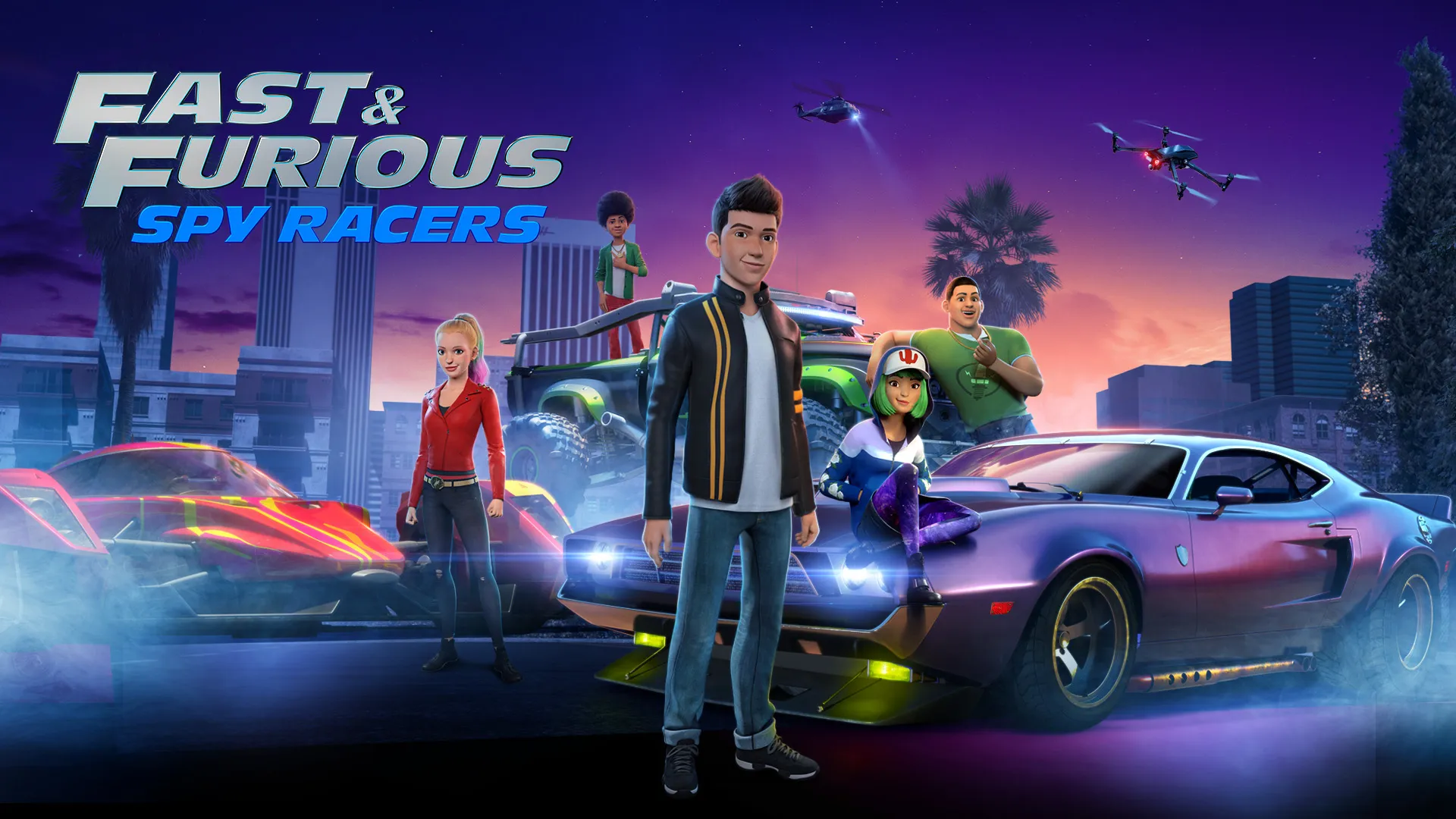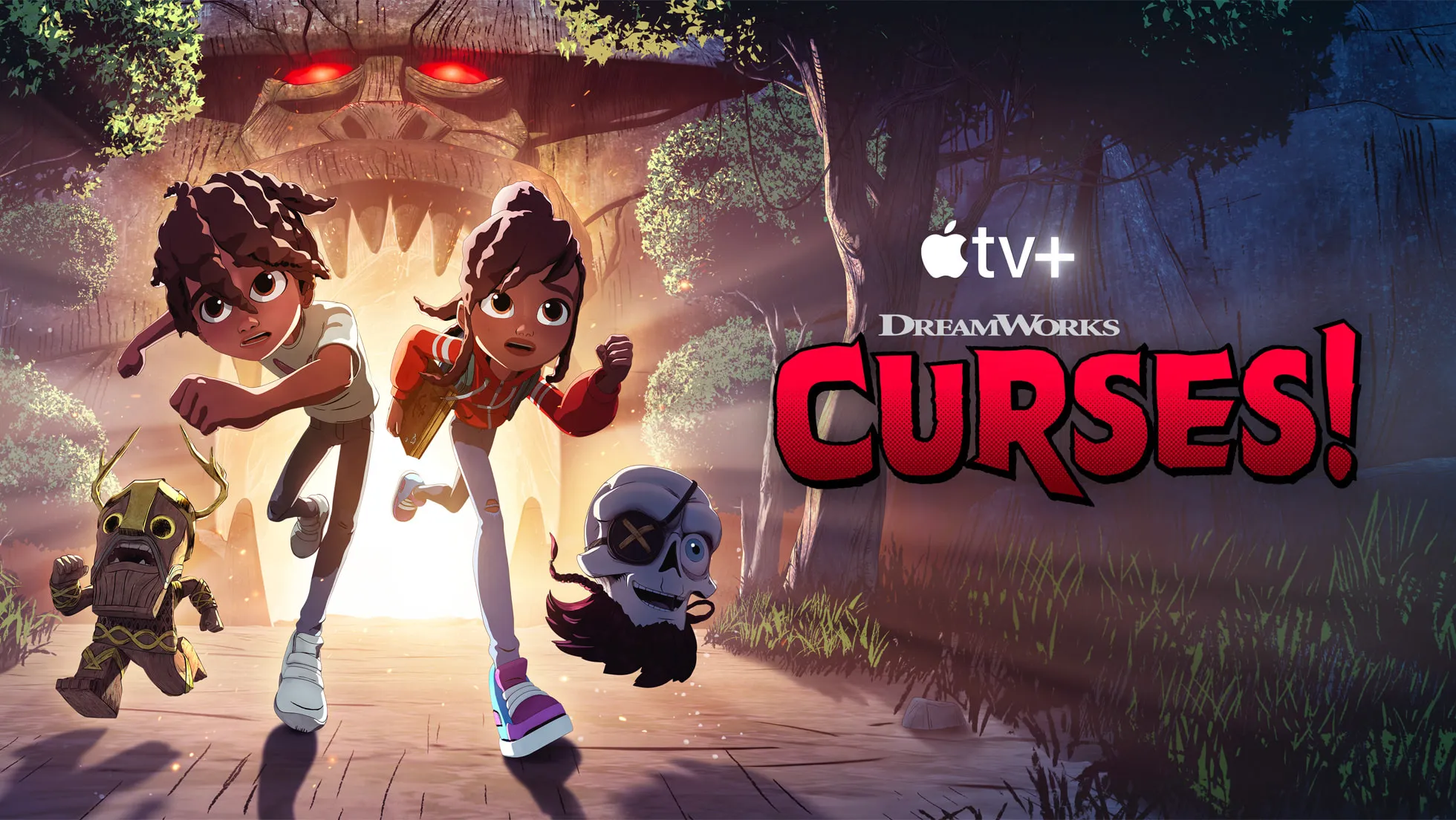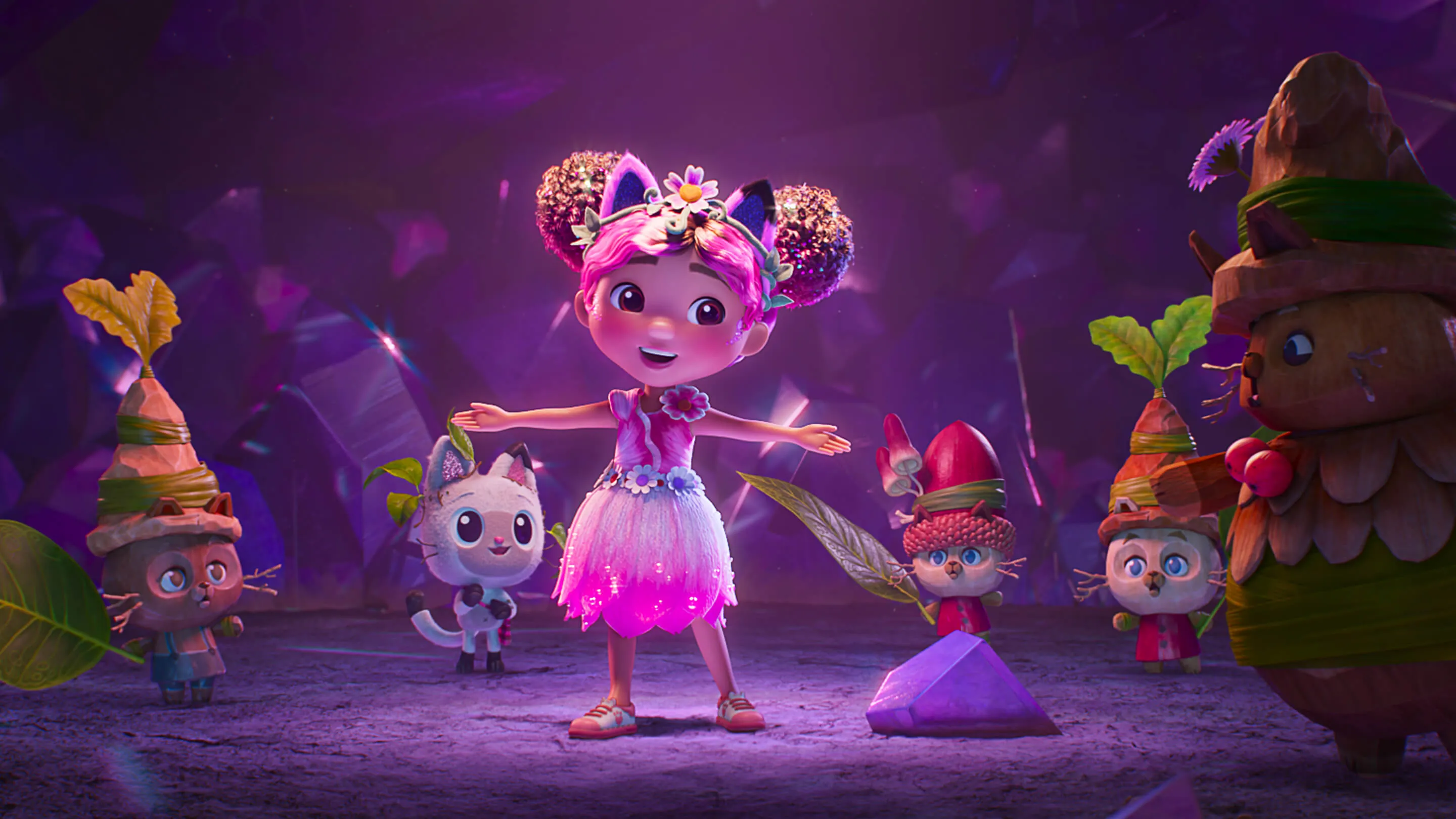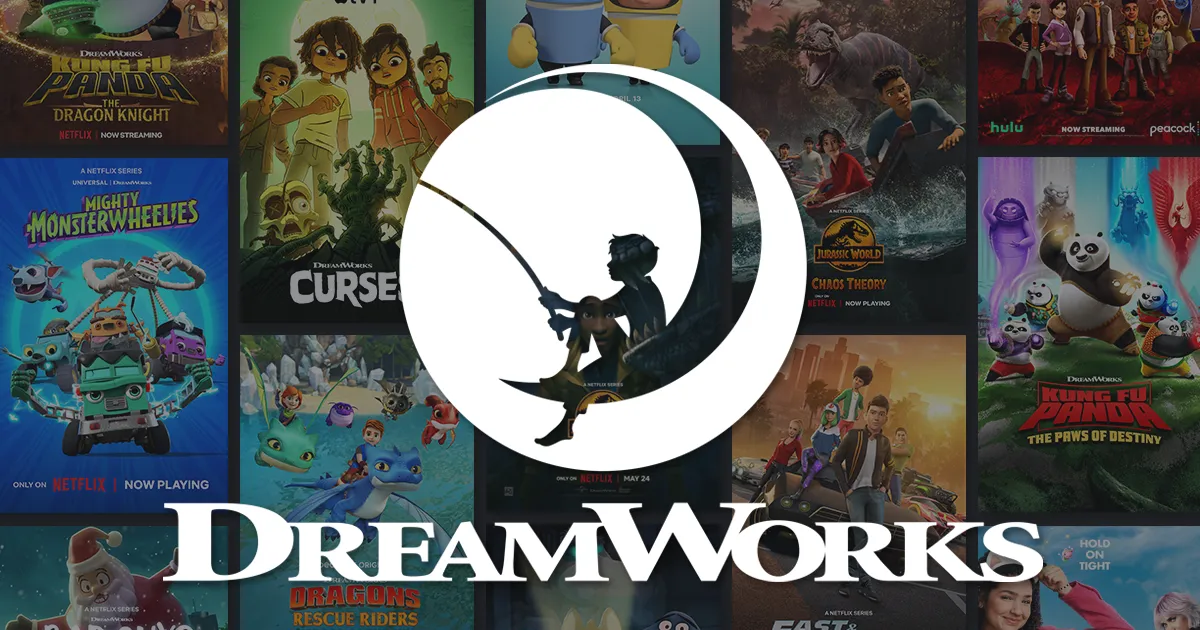I’m currently the Global Lighting & Compositing Supervisor at DreamWorks TV, where I oversee lighting standards, workflows, and pipeline development across all DWTV productions. Since joining the studio in 2017, I’ve had the opportunity to lead a variety of projects that have helped shape the way our studio approaches both technical and creative challenges. Below are a few highlights.
Fast and Furious Spy Racers

Fast & Furious: Spy Racers remains one of the most technically ambitious productions I’ve worked on. The scale and complexity of the show pushed our pipeline well beyond anything we had previously handled, requiring significant innovation across multiple departments.
Scaling Scene Assembly
When I arrived at DreamWorks TV, our environment builds were primarily made up of fully rigged, high-resolution geometry with minimal instancing or caching. Even moderately complex sets could take 30+ minutes to open, severely limiting iteration speed for both animation and lighting.
For Spy Racers, the creative scope expanded dramatically as we needed to build full 16x16 block modular cityscapes at a much higher level of detail. Early tests with smaller blocks quickly revealed critical performance issues.
To resolve this I drew on my experience with caching and instancing and pitched these as solutions. This resulted in the development of a new dynamic scene assembly system, which we called SSB. This system adapted geometry resolution at different stages of production, enabling:
- Real-time playback for animators through GPU-based caches.
- Optimized render proxies for lighters, minimizing scene load times.
With SSB, even our largest environments loaded in under a minute, with real-time playback speeds that dramatically improved artist efficiency.
Optimizing the Shot Light Tool
Our lighting pipeline centers around a proprietary Shot Light Tool, which handles render layers for collaborative lighting workflows. As scene complexity grew with 30,000+ assets per shot, performance bottlenecks became a major obstacle. At its worst, generating render layers would take hours per shot.
I led a full optimization effort, identifying core inefficiencies in filtering logic and filesystem calls. By introducing caching layers, refactoring data access, and batching DCC operations, we were able to reduce load and generation times from over an hour to under 30 seconds per shot, a transformation that made large-scale production feasible.
Building the Lighting Handoff Tool
As the technical complexity of shot prep increased, I developed the Lighting Handoff Tool, which automated the growing list of tasks required to prepare shots for lighting, including SSB prep, hair caching, and QC validations.
The tool was built on a custom object-oriented multiprocessing framework I designed, allowing tasks to be modular, extensible, and render-farm aware. It supported both GUI and CLI interfaces for flexibility across artist and automation needs.
For this work, I received the Advancing the DWATV Animation Pipeline Award in 2019. Many of the systems developed on Spy Racers remain core components of our pipeline today.
Curses!

Curses! marked our first return to stylized toon shading since Spirit Riding Free, but presented unique challenges as our rendering engine of choice had since deprecated some features we previously relied on. The project required rapid pipeline development while the show was already entering production.
Rebuilding The Toon Pipeline
I led a full overhaul of our lighting and render layer systems to adapt to the updated rendering platform. This work also allowed us to revisit long-standing pain points from our earlier toon productions, resulting in a more stable and artist-friendly pipeline.
Revamped Compositing Workflows
The show also required significant updates on the compositing side. I rebuilt our gizmo creator tool from scratch, streamlining the creation of standardized compositing templates while making the toolset more approachable for artists. I also recompiled several C++ plugins from DreamWorks Feature to help achieve the stylized looks required by the show.
Mentorship and Team Development
Produced during the pandemic-era animation boom, Curses! was built by a rapidly growing team that included many junior artists new to the studio and production staff who had never worked on a CG production. I worked closely with these artists to onboard them to our pipeline, provide training, and help them grow into their roles as key contributors to the production.
Gabby’s Dollhouse: The Movie

Gabby’s Dollhouse: The Movie is both DreamWorks TV’s first theatrical feature release and DreamWorks Animation’s first live-action hybrid project. As the studio’s Lighting and Compositing Supervisor, this production required me to expand into entirely new technical and creative workflows while leading my team through several pipeline firsts.
Below are a few key areas where I helped build new systems and workflows to support the film:
ACES, Wide Color Gamut, and HDR Integration
This was our first production adopting ACES color management, Wide Color Gamut, and HDR delivery. I partnered closely with the studio’s color engineer and fellow department supervisors to research, test, and integrate these technologies into our pipeline.
- Rolling out ACES across all relevant DCCs, rendering, compositing, and review tools.
- Training artists, production teams, and leadership on the creative and technical impacts of working with these systems.
- Building new internal utilities and updating legacy tools to support correct color management throughout production.
This work was crucial in ensuring seamless integration between live-action plates and CG, while meeting the technical standards of theatrical and HDR delivery.
Previs Pipeline Development
The film also introduced a dedicated Previs department, something new to our TV pipeline. Since I already oversaw our camera rig, my team took an active role in supporting previs workflows.
- We partnered with previs artists from DreamWorks Feature to understand their requirements.
- Within one month, I led the design and deployment of previs support tools that allowed fast iteration while remaining compatible with downstream departments.
- Continued support ensured a smooth transition from previs into shot production, preserving visual continuity throughout the show.
Cloud World Master Lighting
In addition to my supervisory responsibilities, I had the opportunity to personally take on master lighting for the film’s “Cloud World” sequence, a highly stylized environment featuring volumetric clouds.
- Adapted to a non-standard DCC and rendering engine that required developing new lighting approaches while staying within render budget constraints.
- Designed and executed master lighting that aligned with the creative vision established by the film’s leadership.
- Trained our partner studio on the custom workflow to ensure consistent lighting across shots and DCCs.
This sequence presented unique technical and creative challenges, and it was especially rewarding to return to hands-on lighting work while building a scalable solution for the rest of the team.
All Productions
Here is a list of all the productions I’ve been a part of
- Many early development projects
- Dinotrux
- Spirit Riding Free
- Kung Fu Panda: The Paws of Destiny
- DreamWorks Dragons: Rescue Riders
- The Boss Baby: Back in Business
- The Epic Tales of Captain Underpants
- Fast & Furious Spy Racers
- Madagascar: A Little Wild
- Jurassic World Camp Cretaceous
- Doug Unplugs
- Gabby’s Dollhouse
- The Croods: Family Tree
- DreamWorks Dragons: The Nine Realms
- The Boss Baby: Back in the Crib
- Kung Fu Panda: The Dragon Knight
- Not Quite Narwhal
- Curses!
- The Bad Guys: A Very Bad Holiday (Holiday Special)
- The Bad Guys: Haunted Heist (Holiday Special)
- Orion and the Dark (Streaming Feature)
- Megamind Rules!
- Megamind vs. the Doom Syndicate (Streaming Feature)
- Troll’s YouTube Shorts
- Jurassic World: Chaos Theory
- Mighty Monsterwheelies
- Bearbrick (Rendered in Game Engine)
- Gabby’s Dollhouse: The Movie (Theatrical Feature)
